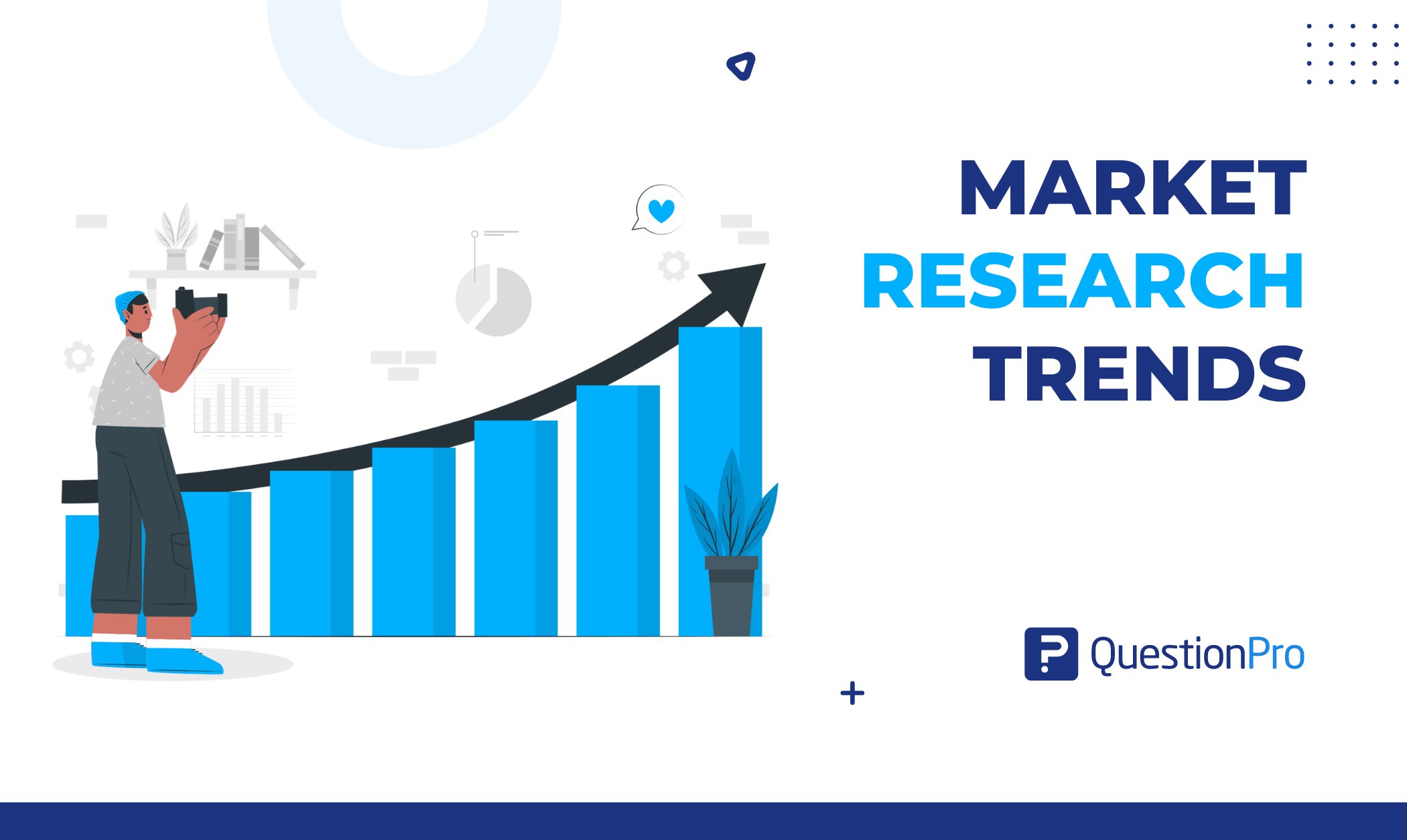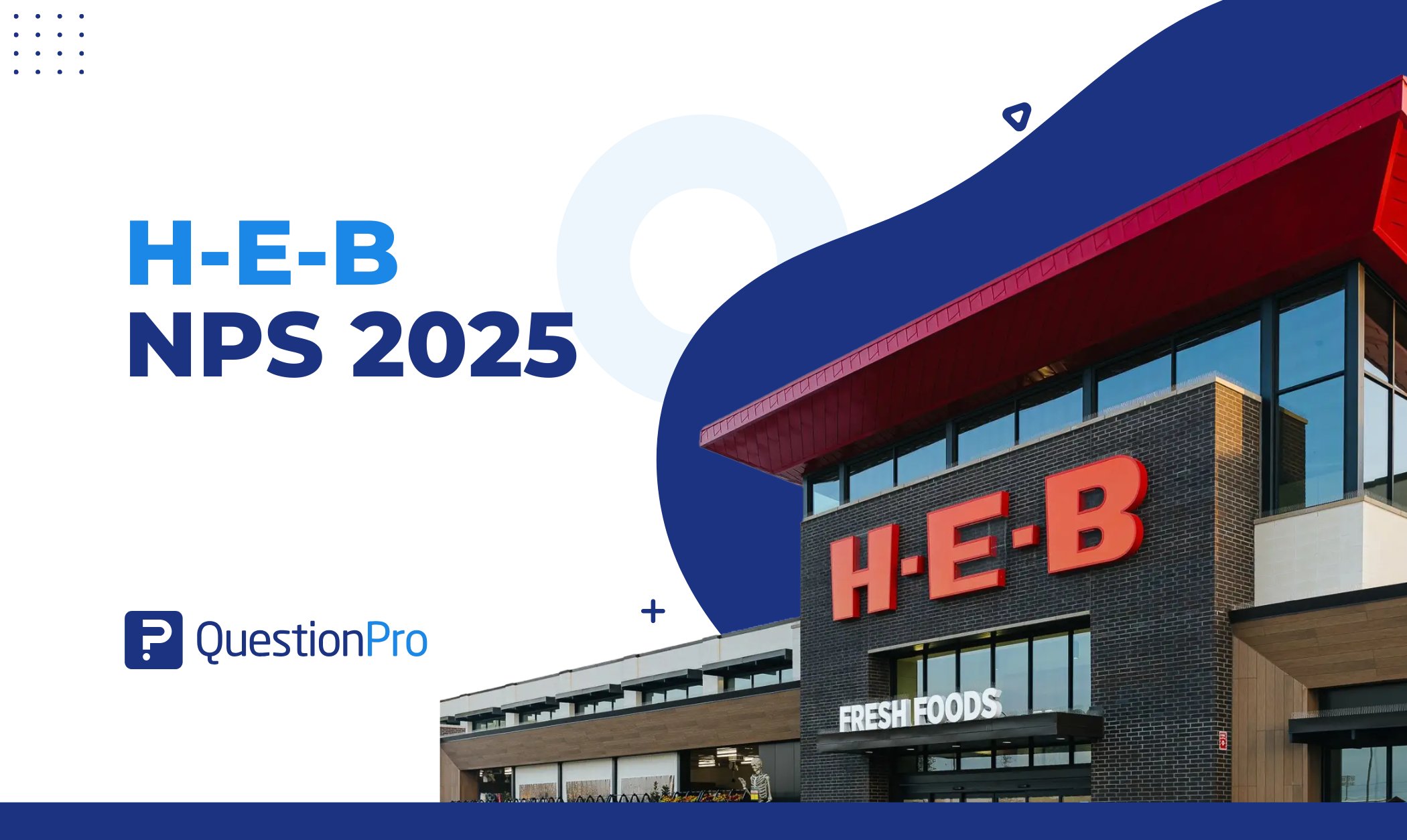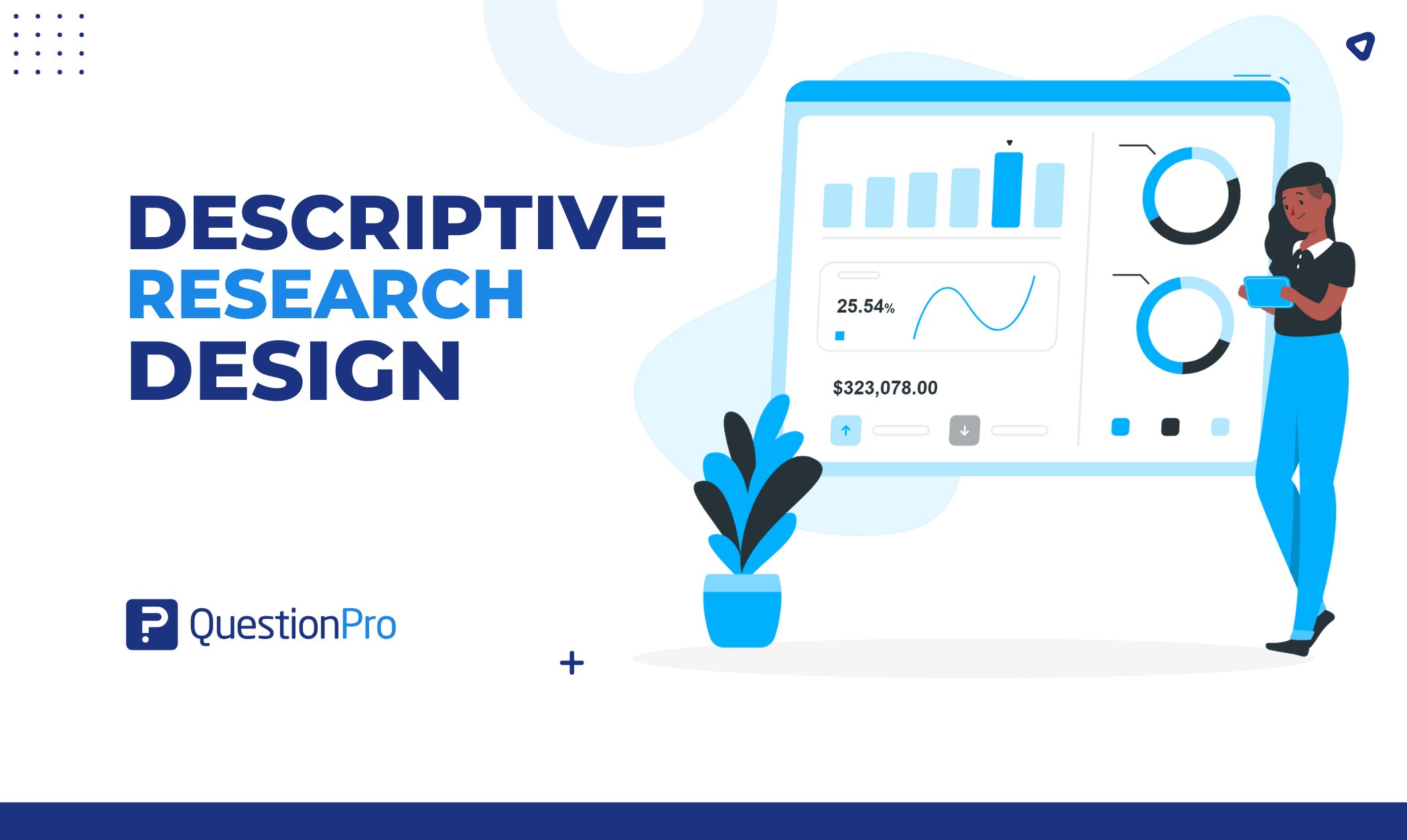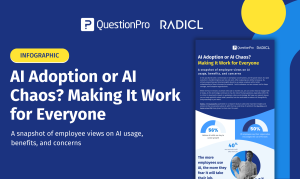
Market research is a continually evolving sector that has helped brands, organizations, individual researchers, the market research industry, and academicians stay above the curve. Research functions only grew in a global economy that took a significant hit in 2020.
If anything, focusing on conducting smarter, more efficient, and impactful research has been on the rise. No longer has research stayed primitive with long boring surveys sent to thousands of respondents hoping for a response. Market research has evolved because the importance of insightful data is now evident to everyone.
From transactional data to customer data, position metrics to consumer research, and opinion research to academic research, differentiating between the right data and noise has become extremely important.
Therefore, conducting smarter research is now the need of the hour. In a mostly open-ended ecosystem, it is tough to get a consensus. Still, surprisingly enough, most researchers, brands, and facilitators of research agree on emerging trends to keep an eye out for in 2023 and beyond.
LEARN ABOUT: Market research vs marketing research
We have listed the research trends that we think will be the most defining factors for the global market research market in 2023 and beyond.
Top 11 Market Research Trends in 2023 to Keep an Eye Out for
Data can be construed differently by different people. What’s unchallengeable is that there is now a technological advancement in collecting and analyzing data.
Social media plays a vital role in gathering sentiments; there is an advancement in psychological, economic, and scientific knowledge in data collection. These factors have led to market research evolution, and 2023 will see a marked shift in collecting transactional data.
In no particular order you should keep an eye out for these research trends in 2023 and beyond to fortify your decision-making ability.

Smarter, shorter surveys
This trend gets talked about a lot, but the truth is that most researchers and research tools do not allow the ability to conduct smarter surveys. However, at the turn of 2020 and beyond, collecting the right data with good survey response rates and honest feedback is becoming increasingly important.
Capturing transactional data at the point of experience with a smart, short, and efficient survey helps with better data collection and consumer insights. Negating demographic data collection when that information is already available and using smarter research questions at the point of experience will help reduce survey fatigue and collect data that matters.
For example, to collect choice-based data that is a cornerstone of most research projects, adding an anchored MaxDiff question in your choice-based scaling will allow you to get deeper insights without having to conduct multiple follow-up studies.
Similarly, deploying omnichannel surveys at various touchpoints helps you collect the correct transactional data without compromising data quality.
DIY in-house research
For a long time, research has been considered a complex and labor-intensive process requiring extreme special qualifications to get right. In 2023, there will be a marked shift towards DIY in-house research with smarter research tools.
Simple to understand and deploy platforms without the need for complex scripting and powerful research questions is the way forward.
Conducting market research tools is the ability to collect quantitative and qualitative data with the bonus of having a good respondent base in one location. Gone are the days when each component required going to different platforms.
This will make the management of market research easier for all the stakeholders. DIY research and do-it-together (DIT) research, where the research tool provider chips with specialized research service
Longitudinal tracking
One of the biggest market research trends going into 2023 and beyond will be longitudinal studies and tracking. For far too long, research has relied on broken-down respondent sets that do not help gather a macro-level view of data and insights.
With the help of community management platforms, longitudinal research helps track behavior changes and derive market research industry trends in between external and internal factors on research and insights.
LEARN ABOUT: Market research industry
Not just that, longitudinal tracking also helps with quicker and faster turnaround research from members who matter the most to you and insights you can trust and co-create with. Having a ready set of opt-in research-ready respondents can help with ongoing monitoring studies and expedite your experience transformation initiatives.
Online qualitative research
One market research trend that has been a definite by-product impact of COVID-19 is online qualitative research. With limitations on in-person focus groups and other qualitative research methods, migrating this model online for continued tracking is the only option.
LEARN ABOUT: Qualitative Interview
But now that online focus groups are making an in-road in research models for research managers globally, there is a definite shift in understanding its value and importance. From using the right tool to manage data collection to gamification and digital rewards, moving your offline focus groups online has multiple benefits.
The ability to moderate video discussions while collecting data from a diverse target audience limited by geographical boundaries is a huge bonus.
Quality data collection
In a recent live video I did with the VP of Products at QuestionPro, Anup Surendran, we spoke about how hyper-personalization will help with better-quality data and insights. Going into 2023 and beyond, with the increase in the number of surveys a person is expected to respond to, standing out and collecting quality data will be challenging.
Personalizing data collection at the point of experience with intercept studies and smarter shorter surveys helps with data collection.
High-quality survey data reduces the time to market and aids insights management at costs that don’t cost an arm and a leg. Putting together studies that aid with high-frequency research and non-intrusive hyper-personalization will see higher levels of success going into 2023 and beyond.
Instant responses
Heading to a meeting and want some quick insights? Cannot choose between two names for a new product line and want quick responses?
Who wouldn’t like immediate insights from a group of respondents when you are stuck somewhere? In 2023, there will be a marked shift towards high-cadence, high-frequency studies with very high turnaround times.
Small surveys or polls that are set up and deployed within minutes and answers and analysis within minutes are the future of market research. Using a smart product that allows you to tap into a pre-defined and mobile-ready respondent population, the scope for quick turnaround studies is very high.
Using your existing technology stack and internal communication tools, and CRM, the use cases would be limitless if you could create and push out studies that offer you responses representing a larger population.
We at QuestionPro are building a mechanism that provides you with quick turnaround response times for short studies using our proprietary global panel of respondents to help you go from perceptions to decisions within minutes.
Non-intrusive transactional studies
The biggest pet peeve of people not wanting to participate in research studies and respond to surveys is the many pointless questions and many such surveys.
But what if you could gather customer delight with a customer experience platform that leverages non-intrusive transactional studies that are highly engaging, short, and compelling to respond to?
There will be a marked shift towards smarter customer engagement and monitoring studies that do not require respondents to fill in pointless surveys that include demographic data and repetitive information and can help manage customer satisfaction and legitimate NPS scores.
With the help of smart intercept studies, scores from across various touchpoints help draw a better understanding of customer delight and help show vectors and factors that could lead to customer churn.
Emotive surveys
One of the biggest trends in market research that I am most excited about is the added use of technology to capture respondent behavior and data with various factors like facial recognition and contactless surveys.
Surveys that help you capture customer insights where respondents do not have to interact with an external device and sentiments directly are captured just by facial and visual cues will be extremely important going into 2023 and beyond.
A simple question, for example, at a point of experience where facial recognition captures respondent sentiments will go a long way in offering mature insights for brands.
Crowdsourced research
Crowdsourcing in market research helps solve problems at scale with lower costs and makes it to our top 11 market research trends to keep an eye out for 2023. Since crowdsourcing uses the quali-quant method, the insights you can get from a diverse audience base are tremendous.
Not only can it help solve problems, but it also helps to get an idea of a more extensive and varied population. The only drawback of this method is that for a brand to effectively leverage this model, there has to be an advantage of scale, which increases crowdsourcing’s success and feasibility.
Social listening
Due to a large social media footprint, it is becoming increasingly important to listen to social media’s happening and derive sentiments from conversations. Since social media is highly emotive, there is a broader scope to get to the root of ideas, complaints, purchase behavior, macro, and micro trends, etc.
Using social listening, you can isolate the data you care about and look for short-term indicators around consumer research. This is the future of ethnographic research. While social listening doesn’t make sense for all market researchers and brands, if done well, it can help to identify actionable vectors at a very early stage.
AI-assisted data collection
Two common themes arose from market research in 2020 – personalization and convenience. Using AI-assisted data collection helps in advancing research for brands and researchers. The right data going to the right stakeholders in real time define the success metrics of market research.
By limiting human interactions but increasing milestones and points of experience-based smart research, there is greater success in collecting the right data. This helps focus on deriving insights from the data and not on the data collection itself.
For long-form data and open-ended data, AI-based research and sentiment analysis help derive insights from text-based data without intervening and manually interpreting it.
How QuestionPro helps in market research trends?
QuestionPro is a comprehensive online survey and market research platform that provides a variety of features and tools to help organizations remain ahead of market research trends. Here’s how QuestionPro can assist you:
Advanced survey creation
QuestionPro makes developing surveys with skip logic, several question kinds, and advanced customization easy. This flexibility lets researchers build surveys that follow market research trends and best practices.
Mobile-friendly surveys
QuestionPro lets researchers design mobile surveys. Given the rising trend of mobile survey participation, this assures a smooth and easy survey experience for respondents.
Automated survey distribution
QuestionPro distributes surveys via email, social media, and embedded surveys. These distribution choices help researchers to contact more respondents through digital media.
Advanced analytics and reporting
QuestionPro has comprehensive analytics and reporting tools that allow researchers to examine survey data and provide actionable insights. Researchers can use trend analysis, cross-tabulations, and statistical analysis tools to find patterns, trends, and correlations in data.
2023 will be a huge year for market research, and we are excited to play a pivotal role in making research easy and accessible to everyone. What market research trends are you looking forward to, and are you keeping an eye out for going into 2023 and beyond?
Frequently Asking Questions (FAQ)
By examining market trend data, investors can have a better understanding of how various assets have performed over time and make more informed decisions about where to put their money.
Artificial intelligence is the market research trend. It saves time and money and may increase data quality. In fact, 31% of researchers and brands believe an automated data quality solution can alleviate multiple business difficulties.







